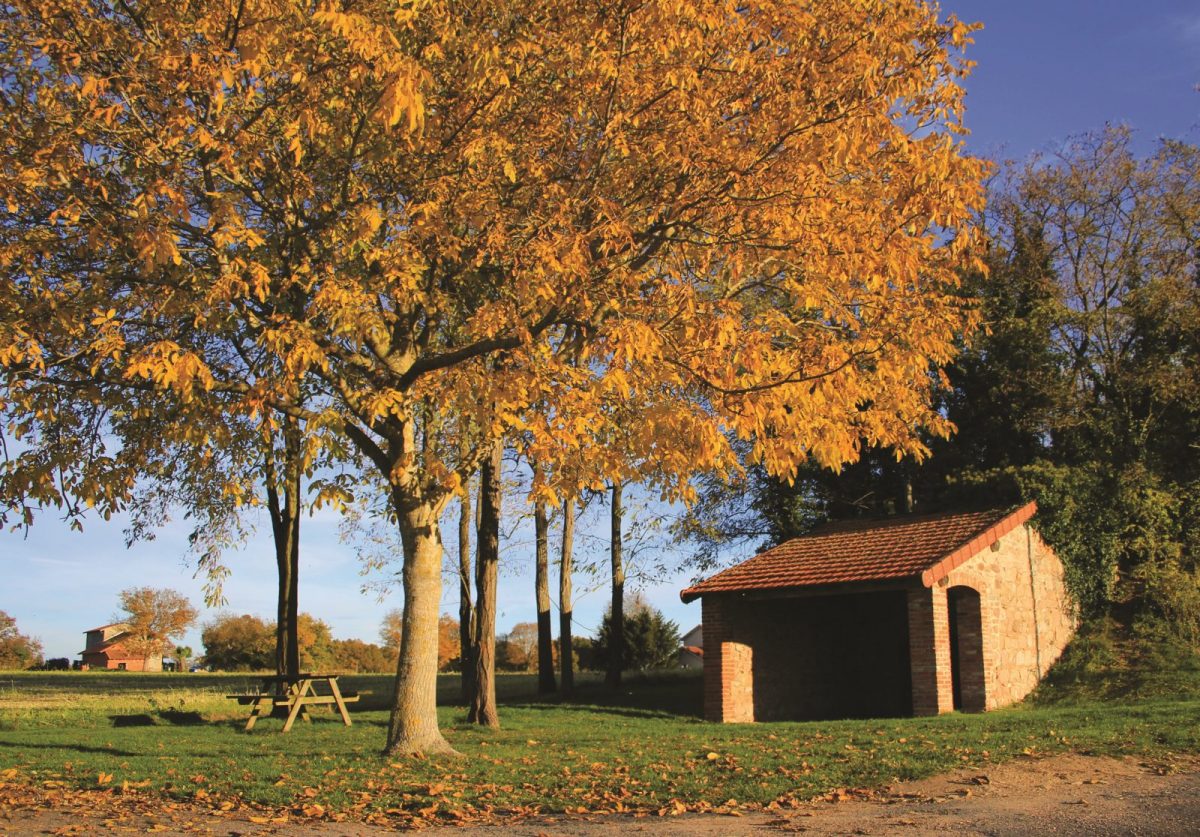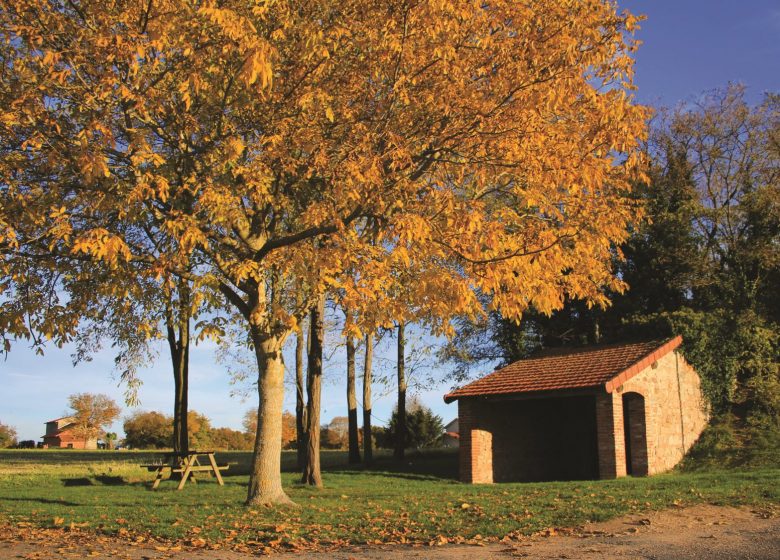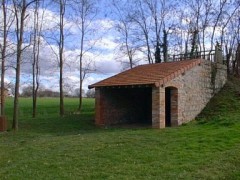All year, every day.
The earthwork allowed the stone to be transported from the extraction site (filled in from) to the upper part of the kiln.
The oven located near Senouche is in the form of a small building with a footprint of approximately 40 m2, extended by an access ramp of approximately 60 m.
Built of roughly matched granite stones, it opens to the north by a brick vault (discharge door). It is framed by two imposing buttresses intended to reinforce the masonry and to counterbalance the strong thrust exerted both by the mass of the backfill and by that due to the expansion of the tank under the effect of heat during its operation.
Backing onto the embankment, the gently sloping access ramp allowed carts to access the upper part to unload coal or stones into the throat. The oven itself, ovoid in shape, is lined with a briquette facing.
Use of the lime kiln
The uses of lime are multiple (from construction to soap) but depend on its quality and this depends largely on the type of oven used. We can guess the drawbacks of the flowing furnace: obligation to store lime away from air and humidity and above all a product made impure by fuel residues, the mixture was unsuitable for use in industry and chemistry, although, for the construction, the "Manuel du Chaufournier" (1836) indicates that the well sifted "lime ash", passed to the lady (but what a job!) makes an excellent mortar resistant to the insults of time .
Senouche's product must have been used mainly for soil amendments, in particular those on the Côte Roannaise. The lime was sold quick, among others to the winegrowers, who, with the help of a supply of water, transformed it into slaked lime in order to obtain a spreading ash.
The water causes heating (very caustic) and vaporization. The transport being done by cart, it was necessary to watch for the clouds, beware of the rain ...
Functioning
This type of oven was lit for several months, during the beautiful season. The rest of the time was used to clean and restore the furnace, to extract and crush the stone.
Indeed, the blocks were divided into pebbles the size of a fist by means of a mallet, often with a holly handle (for its flexibility). The oven was prepared at the base by placing a few bundles on grids, then alternating layers of coal and crushed stones were placed up to the top. We closed the mouth with earth, without forgetting to provide a fireplace in the center for the draft.
Around 1945, these grates had to be sawn to remove a cow that had fallen into the oven through the mouth. She wouldn't even have suffered too much.
In strong winds, this was reduced by adding soil to the level of the chimney. In fact, the oven had to be watched day and night. When the bundles are lit, the fire is transmitted to the first layer of coal, then through the stones to the second; the first layer of stones transformed into lime cools while the upper ones are heated by the burnt gases.
After a long firing, a few molten samples were removed from the base of the furnace which, on falling, were to be reduced to ashes. If the result was conclusive, the quantity requested was thus withdrawn. The furnace was immediately recharged with coal and stones in an appropriate manner. A chaufournier was not to fear either heat or smoke.
Opening
| From January 01 to December 31, 2024 | |
| Monday | Open |
| Tuesday | Open |
| Wednesday | Open |
| Thursday | Open |
| Friday | Open |
| Saturday | Open |
| Sunday | Open |
Prices
Free
Free access.










